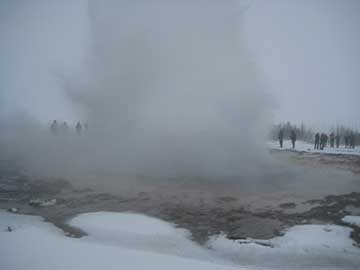Like all other crusty sexagenarians, I get irritated by certain trends in the evolution of the language I speak. I suppose it’s natural to retain a deeply held desire to hold on to the speech cadences we suck in with our mothers’ milk. So when you’ve been around for more than half a century you inevitably encounter an increasing number of linguistic innovations which you feel reluctant to adopt. Some, of course, are refreshing and attractive; but it’s when certain phrases I’m used to are subverted or distorted by changing usage that I get that instinctive feeling of revulsion.
Here’s an example: when getting tired of something, my parents were always “bored with” it, or maybe “fed up with” it. And so, of course, was I. But nowadays it’s virtually universal to be “bored of” or “fed up of“. Of course, the prepositions we use are quite arbitrary: lately I’ve been learning some Italian, and knowing which preposition to use in each situation can be quite difficult for a beginner: ‘su’, ‘in’, ‘da’, ‘di’, ‘a’…? It just has to be learnt. And it can be quite important: ask for ‘un bicchiere di vino’ and you’ll be given a glass of wine; but if instead you go for ‘un bicchiere da vino’ what you’ll get is a wine glass.
But the conventions for our choice of prepositions are really quite arbitrary; and with the bored/fed up example there’s no danger of mistaking the meaning, so what am I making a fuss about? Well, my problem is that every time I hear the newer version I get that visceral, chalk-squeaking-on-a-blackboard spasm in the gut, and I can’t help it. And don’t get me started on some of those other verbal habits that so many of my generation love to hate: ‘phenomena’, ‘criteria’ or media’ used as singular nouns; or ‘disinterested’ to mean ‘uninterested’, ‘infer’ to mean ‘imply’ or (heard absolutely everywhere now) ‘refute’ to mean ‘deny’.
Of course all those who protest about such things are at pains to rationalise their distaste, and bring to bear an argued justification. The late philosopher Anthony Flew puts it this way:
If we oafishly employ our verbal chisels as verbal screwdrivers, we thereby unfit them for the job to which they are best suited. So what do we use for a chisel when a chisel is what we need?’ (Anthony Flew, Thinking about Thinking).
Well, true, I suppose, as far as it goes; once all your chisels are well and truly blunted there’s no means of resharpening them, in this instance at least. But language is endlessly innovative; it will always be rummaging around in the toolbox for replacements, or perhaps fashioning entirely new instruments. I think that what is really bothering Flew is that old bred-in, instinctive revulsion that kicks in when he detects the linguistic ground on which he originally learned to walk slipping and sliding around beneath his feet. Trust me, I know – I feel it myself.
Nevertheless, our standard sources often take a more relaxed view. The Oxford Dictionary, for example, accepts the shift in meaning of ‘disinterested’ – on the basis that a dictionary is in the business of reflecting usage, rather than dictating it. But do we pedants take that lying down? Oh no. There’s always that old fallback, ‘the purity of the language’.
‘What purity?’, you might justifiably ask. English, of all languages, has the most tenuous claim to this quality. As it has memorably been put:
The problem with defending the purity of the English language is that English is about as pure as a cribhouse whore. We don’t just borrow words; on occasion, English has pursued other languages down alleyways to beat them unconscious and riffle through their pockets for new vocabulary. (Attributed to the Canadian writer James Davis Nicoll, from an internet forum in 1990).
So that’s one way of finding your replacement chisels – nick them out of the back of the nearest unsuspecting linguistic builder’s van.
A more recent self-appointed language policeman is Simon Heffer, whose book Strictly English: The Correct Way to Write…and Why It Matters offers a comprehensive guide to ‘correct’ English. There is, to be fair, much reasonable common-sense advice on clarity of expression between its covers, but once again, Heffer seems to share with me a distaste for deviations from what seem rather arbitrary rules – although he takes the crusade much further than I would dare; many critics have pointed out that his feet seem to be planted firmly in the early 1900s. And of course, it’s always fun to see whether the these guardians of supposed purity practise what they preach. Here, unfortunately, Heffer is rather open to ridicule on a number of counts. For example, on page 49 he tells us sternly:
The phrase each other can only apply to two people or things – “John and Mary wrote to each other” is correct but “John, Mary and Jane wrote to each other” is not. “John, Mary and Jane wrote to one another” is.
If Heffer is offended when this rule is flouted he must have had a particularly straight-laced education; I must admit it’s new one to me. But on page 189 we find Heffer saying:
…I advise my colleagues on The Daily Telegraph to bear in mind the sensitivities of the readers, because we would like them to continue to buy the newspaper and not feel alienated by its diction. So our readers communicate with each other on writing paper, not notepaper.
As one critic has pointed out, if we give Heffer the benefit of the doubt and assume he is not breaking his own rule, we can only conclude that the The Daily Telegraph has only two readers. But I’m inclined to forgive him, if only because on page 119 he is stipulating that ‘One is bored by or with something, never of it’, and that ‘One becomes fed up with things, not of them.’ (Hurray!)
But of course it’s true that without rules of some sort, we’d have no consistency at all and would be unable to understand each other – sorry, one another. As in so many other fields, the art is in finding creative ways to break these rules, thus opening up a whole new range of expressive possibilities. It’s rather like that graphic technique where you position a frame around an illustration, and then let the contents burst outside it – the effect always works, and injects extra vigour into the subject in way that wouldn’t have been achievable unless the frame were there in the first place. Rules can be used to great effect when they are broken, just as the frame is given a new purpose when its more obvious function is subverted.
However, with my pedant’s hat on I’d point out that rule breaking is more often a result of what Flew in the passage above called ‘oafishness’, and not the exercise of creative flair. But either way, it happens. It seems to me inevitable that there will always be tension between natural variety of expression and the restraining force of a rule framework. I am put in mind of one of the illuminating metaphors which the philosopher Wittgenstein was apt to employ. He compares those notions we accept implicitly – ‘bedrock’ notions as we might call them – with the rock of a river-bed, which guides the river’s flow of water – our day-to-day thoughts: “But I distinguish between the movement of the waters on the river-bed and the shift of the bed itself; though there is not a sharp division of the one from the other.” (On Certainty, §97) The rules of language seem to be a specific example of Wittgenstein’s idea: the rules of our language determine how we express ourselves, but our everyday discourse, in turn, gradually wears away and remoulds the rock of the rules themselves; the river changes course.
The Heffers of this world (and, I’m afraid, the Duncommutins) will always be vainly attempting to shore up the banks and maintain that river in the same course – but they will ultimately be defeated by the torrent. The fact is that I still prefer to say “fed up with” and “bored with”. Like any self-respecting dinosaur I shall remain set in my ways, and addicted to the comforting sound of the language I am used to. Until, that is, I become extinct.





















